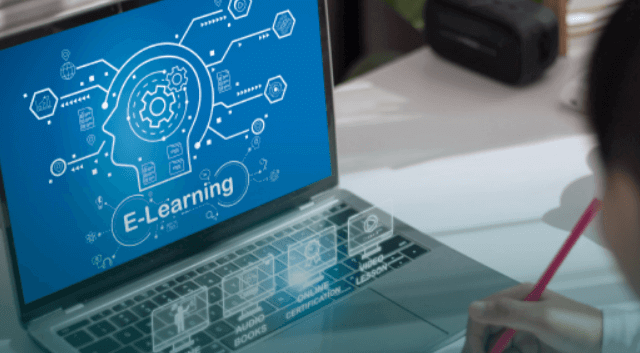What role does technology play in education reform in the USA?

Introduction
Education reform in the USA has been an ongoing process aimed at improving the quality and accessibility of education for all students. In recent years, technology has emerged as a pivotal force in driving this reform. From enhancing the learning experience to providing new avenues for teacher development, technology is reshaping the educational landscape in profound ways.
Technology in Education Reform
Historical Context
The journey of technology in education dates back several decades, with the introduction of audiovisual aids and early computers in classrooms. However, the true revolution began with the advent of the internet, which opened up a world of information and learning opportunities.
The Evolution of Educational Technology
Educational technology has evolved from simple instructional aids to sophisticated systems that facilitate interactive and personalized learning. This evolution has been marked by the development of e-learning platforms, digital classrooms, and advanced software applications that cater to diverse educational needs.
E-Learning Platforms
Types of E-Learning Platforms
E-learning platforms vary widely, from Learning Management Systems (LMS) like Blackboard and Canvas to Massive Open Online Courses (MOOCs) like Coursera and edX. These platforms offer a range of educational content, from structured courses to flexible, self-paced learning modules.
Benefits of E-Learning Platforms
E-learning platforms provide numerous benefits, including flexibility in learning schedules, access to a wide range of courses, and the ability to cater to different learning styles. They also enable lifelong learning and professional development, making education more accessible to individuals beyond traditional school settings.
Digital Classrooms
Interactive Whiteboards
Interactive whiteboards have replaced traditional chalkboards in many classrooms, allowing for dynamic presentations and interactive lessons. These tools enable teachers to incorporate multimedia resources and engage students more effectively.
Student Response Systems
Student response systems, or clickers, allow students to participate actively in lessons by responding to questions in real-time. This technology promotes engagement and provides immediate feedback to both students and teachers.
Personalized Learning
Adaptive Learning Technologies
Adaptive learning technologies use algorithms to adjust the difficulty of educational content based on the learner’s performance. This personalized approach helps address individual learning needs and improve student outcomes.
Benefits of Personalized Learning
Personalized learning fosters a more tailored educational experience, helping students progress at their own pace. It enhances student engagement, motivation, and academic performance by addressing individual strengths and weaknesses.
Gamification in Education
What is Gamification?
Gamification involves incorporating game elements into non-game contexts, such as education. This approach uses rewards, challenges, and competitive elements to motivate and engage students.
Examples of Gamification in the Classroom
Examples of gamification include using point systems, leaderboards, and badges to reward student achievements. Educational games and simulations also provide interactive and immersive learning experiences.
Blended Learning
Blended Learning Models
Blended learning combines traditional face-to-face instruction with online learning activities. Models include the flipped classroom, where students review content online and engage in interactive activities in class.
Advantages of Blended Learning
Blended learning offers flexibility, allowing students to learn at their own pace while benefiting from direct teacher interaction. It also promotes the use of diverse instructional methods, catering to different learning preferences.
STEM Education
Importance of STEM in Modern Education
STEM (Science, Technology, Engineering, and Mathematics) education is crucial in preparing students for the demands of the modern workforce. It encourages critical thinking, problem-solving, and innovation.
Role of Technology in STEM Education
Technology plays a vital role in STEM education by providing tools for experimentation, simulation, and visualization. Robotics, coding platforms, and virtual labs enhance the learning experience and prepare students for future careers in STEM fields.
Teacher Training and Development
Digital Tools for Teacher Training
Digital tools such as online courses, webinars, and virtual workshops offer teachers opportunities for continuous professional development. These resources help educators stay updated with the latest teaching strategies and technologies.
Continuous Professional Development
Continuous professional development is essential for teachers to adapt to new educational technologies and methodologies. It ensures that teachers are well-equipped to meet the evolving needs of their students.
Educational Apps and Tools
Top Educational Apps
Top educational apps like Khan Academy, Duolingo, and Quizlet provide interactive and engaging learning experiences. These apps cover various subjects and skill levels, offering valuable resources for students and teachers alike.
Integrating Apps into Curriculum
Integrating educational apps into the curriculum enhances traditional teaching methods. Apps can provide supplementary materials, interactive exercises, and personalized learning pathways.
Remote Learning
Challenges of Remote Learning
Remote learning presents challenges such as lack of access to technology, limited interaction, and difficulties in maintaining student engagement. Addressing these challenges is crucial for effective remote education.
Technological Solutions for Remote Learning
Technological solutions include providing devices and internet access to students, using interactive online platforms, and employing virtual classrooms to facilitate real-time communication and collaboration.
Collaborative Learning Tools
Benefits of Collaborative Learning Tools
Collaborative learning tools, such as Google Classroom and Microsoft Teams, promote teamwork and communication among students. These tools support group projects, discussions, and peer feedback.
Examples of Collaborative Tools
Examples of collaborative tools include document sharing platforms, video conferencing software, and online discussion forums. These tools facilitate seamless collaboration and enhance the learning experience.
Data-Driven Decision Making
Role of Big Data in Education
Big data in education involves collecting and analyzing large volumes of data to inform decision-making. This data can include student performance metrics, attendance records, and engagement levels.
Using Data to Improve Student Outcomes
Data-driven decision-making helps identify areas for improvement, track student progress, and tailor interventions to support individual student needs. It enables educators to make informed decisions that enhance educational outcomes.
Cybersecurity in Education
Importance of Cybersecurity
As education becomes increasingly digital, cybersecurity is paramount to protect sensitive information. Ensuring the security of student data and educational resources is a top priority.
Protecting Student Data
Protecting student data involves implementing robust security measures, such as encryption, secure authentication, and regular security audits. Educators and institutions must stay vigilant against cyber threats.
Equity and Access
Addressing the Digital Divide
The digital divide refers to the gap between those with access to technology and those without. Addressing this divide is essential to ensure all students have equal opportunities to benefit from educational technology.
Ensuring Access for All Students
Ensuring access for all students involves providing necessary resources, such as devices and internet connectivity, and offering support for students with diverse needs. Equity in education is a critical component of reform.
Future Trends in Educational Technology
Emerging Technologies in Education
Emerging technologies such as artificial intelligence, virtual reality, and blockchain have the potential to revolutionize education. These technologies offer new ways to engage students and enhance learning experiences.
Predictions for the Future
Predictions for the future of educational technology include greater integration of AI, personalized learning experiences, and increased use of immersive technologies. The future holds exciting possibilities for transforming education.
Case Studies
Successful Implementations of EdTech in Schools
Case studies of successful EdTech implementations highlight best practices and lessons learned. These examples provide valuable insights into how technology can effectively enhance education.
Lessons Learned from Failures
Analyzing failures in EdTech implementations helps identify common pitfalls and challenges. Learning from these experiences is crucial for developing more effective strategies in the future.
Conclusion
The role of technology in education reform in the USA is both transformative and multifaceted. From personalized learning and gamification to data-driven decision-making and cybersecurity, technology is reshaping the educational landscape. By embracing these innovations and addressing the challenges, we can create a more equitable, engaging, and effective education system for all students.
FAQs
What is the impact of technology on student engagement?
Technology significantly enhances student engagement by providing interactive and immersive learning experiences. Tools like interactive whiteboards, educational apps, and gamification keep students motivated and involved in their learning.
How does technology support teachers in the classroom?
Technology supports teachers by offering resources for lesson planning, providing platforms for student assessment, and enabling professional development. Digital tools help teachers create dynamic and personalized learning environments.




